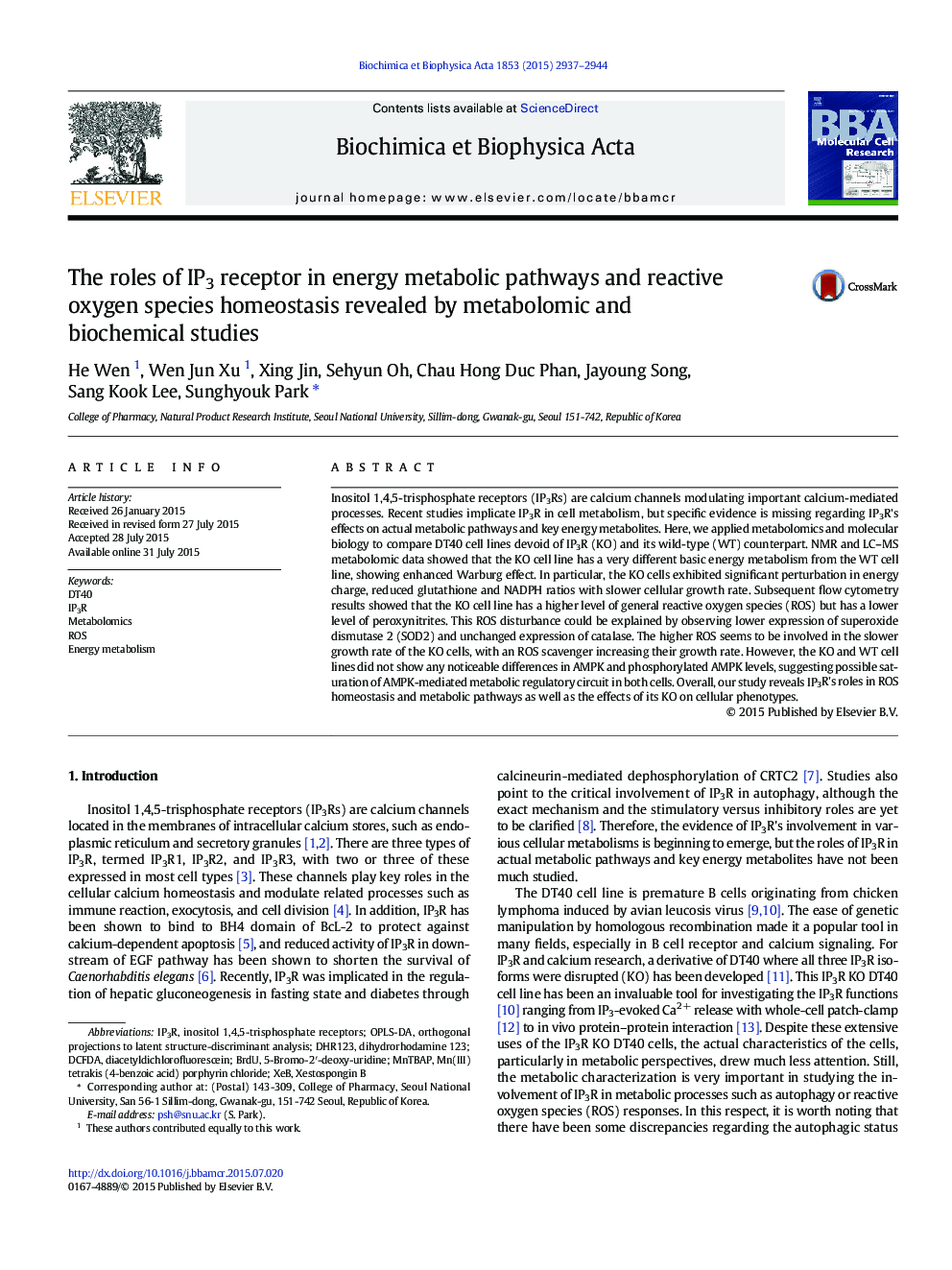| کد مقاله | کد نشریه | سال انتشار | مقاله انگلیسی | نسخه تمام متن |
|---|---|---|---|---|
| 1950471 | 1055643 | 2015 | 8 صفحه PDF | دانلود رایگان |

• The energy metabolism of IP3R WT and KO cells is very different.
• IP3R KO exhibited higher energy charge, lower NADPH, and higher general ROS levels.
• The IP3R KO cells feature slower growth rate, possibly due to the higher ROS level rather than AMPK-mediated pathways.
Inositol 1,4,5-trisphosphate receptors (IP3Rs) are calcium channels modulating important calcium-mediated processes. Recent studies implicate IP3R in cell metabolism, but specific evidence is missing regarding IP3R's effects on actual metabolic pathways and key energy metabolites. Here, we applied metabolomics and molecular biology to compare DT40 cell lines devoid of IP3R (KO) and its wild-type (WT) counterpart. NMR and LC–MS metabolomic data showed that the KO cell line has a very different basic energy metabolism from the WT cell line, showing enhanced Warburg effect. In particular, the KO cells exhibited significant perturbation in energy charge, reduced glutathione and NADPH ratios with slower cellular growth rate. Subsequent flow cytometry results showed that the KO cell line has a higher level of general reactive oxygen species (ROS) but has a lower level of peroxynitrites. This ROS disturbance could be explained by observing lower expression of superoxide dismutase 2 (SOD2) and unchanged expression of catalase. The higher ROS seems to be involved in the slower growth rate of the KO cells, with an ROS scavenger increasing their growth rate. However, the KO and WT cell lines did not show any noticeable differences in AMPK and phosphorylated AMPK levels, suggesting possible saturation of AMPK-mediated metabolic regulatory circuit in both cells. Overall, our study reveals IP3R's roles in ROS homeostasis and metabolic pathways as well as the effects of its KO on cellular phenotypes.
Journal: Biochimica et Biophysica Acta (BBA) - Molecular Cell Research - Volume 1853, Issue 11, Part A, November 2015, Pages 2937–2944